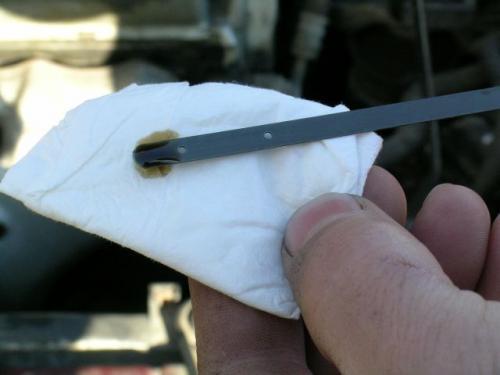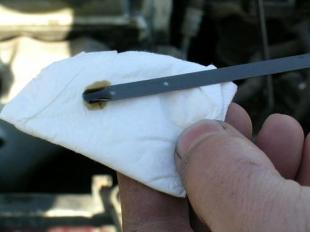
Check the oil level
 The key to engine longevity is not only the quality of the oil, but also its proper level.
The key to engine longevity is not only the quality of the oil, but also its proper level.
The key to engine longevity is not only the quality of the oil, but also the correct level, which the driver must check regularly, in both new and old engines.
The correct oil level is of paramount importance for the correct operation of the engine. Too low a condition can lead to insufficient lubrication or even temporary lubrication failure of some engine components, which in turn causes accelerated wear of mating parts. Oil also cools the engine, and too little oil cannot dissipate excess heat, especially in turbocharged engines. 
Unfortunately, many drivers forget to check the oil level, believing that these issues are part of the service and everything will be checked at a periodic inspection. Meanwhile, having driven ten to twenty thousand. km under the hood, a lot can happen and subsequent troubles can cost us dearly. It is worth knowing that engine failure caused by insufficient oil is not covered under warranty.
Modern engines are becoming more and more improved, so it may seem that adding oil between changes should not be. Unfortunately, this is not the case.
The degree of force of the drive units is increasing, the number of horsepower per liter of power is constantly increasing, and this leads to the fact that the thermal load of the engine is very high, and the oil has very difficult operating conditions.
Many drivers say that their car's engine "doesn't use oil". Of course, this may be true, but this also does not relieve us of the periodic check of the condition, as leaking or failure of the rings can occur, and then a sharp increase in oil consumption.
The oil level should be checked every 1000-2000 km, but not less often. In worn engines or after tuning, inspection should be carried out more frequently.
Some cars have an oil level indicator on the dashboard that informs us of the amount of oil when the ignition is turned on. This is a very convenient device, which, however, should not exempt us from periodically checking the oil level, since there are sensor malfunctions and its readings do not correspond to the actual state.
The oil also needs to be checked frequently in engines with extended drain intervals. If replacement every 30 or 50 thousand. Km will definitely need to top up the oil. And here the problem arises - What kind of oil to fill in the gaps? Of course, preferably the same as in the engine. However, if we do not have it, you should buy another oil with identical or similar parameters. The most important is the quality class (eg CF/SJ) and oil viscosity (eg 5W40).
A new or old car is likely filled with synthetic oil and should be topped up.
However, synthetic oil should not be poured into an old and worn engine, as deposits may be washed out, the engine may depressurize or the oil channel may become clogged.
The oil level can not only fall, but also rise. This is an unnatural phenomenon, which may be due to damage to the cylinder head gasket and leakage of coolant into the oil. The reason for the increase in the oil level can also be fuel, which happens when the injectors are damaged.
